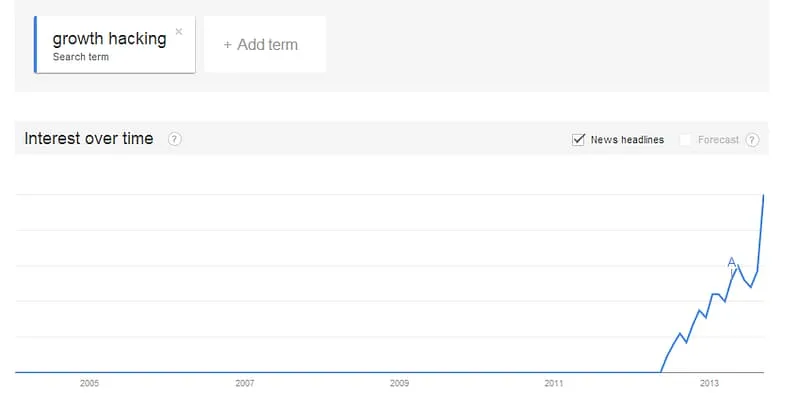I recently launched a book called Growth Hacking — A How To Guide On Becoming A Growth Hacker.
It hit #21 on the top 100 marketing books on Kindle (and #1 on free Kindle books during the KDP run).
Am I a famous author?
No.
Did I do much marketing for it?
Not at all.
So how did I get it on the top 100 marketing books on Amazon?
Well, besides luck, I used a sort of quantitative approach to get sales… with minimal effort.
Starting With the Keyword: “Growth Hacking”

I came across Google Trends data for the term “growth hacking” and saw that it was hitting an all-time high. This gained my interest because when I searched for any books on the subject, I came up with nil.
So, if there’s a growing interest in something and no all-in-one resource exists for it, there’s an obvious market gap. That’s what initially inspired me to write a book on growth hacking — a subject I already had experience and domain knowledge in.
While researching, I noticed that Ryan Holiday was coming out with a book titled Growth Hacker Marketing in September (2013). My thought process was:
- Be first to market (which should help in the long term).
- Possibly piggyback on sales of a best-selling author.
I didn’t see Ryan Holiday’s book as competition but rather as an opportunity.
Why?
The Amazon description showed that Ryan’s book was about ~60 pages long. This gave me a chance to provide a longer and more comprehensive book for readers who might want more detail.
It was also an opportunity because our books would be the only two on Amazon under the keyword “growth hacking” at the time. That meant anyone searching for Ryan’s book would also discover mine purely via keyword overlap.
Focusing on Design
Once the content of the book was finished, the next step was design. Most Kindle eBooks I’ve seen have terrible cover designs, and I’m certain this affects conversions.
You can’t skimp on design!
Why would you spend all this time writing a book, only to settle for a subpar cover? People will judge the quality of your book by the quality of the cover. The saying “Don’t judge a book by its cover” is well-known, but in reality, your cover matters — a lot.
I splurged on the cover design. After a few revisions, I ended up being very happy with the result; I’m confident this helped the book’s bottom line.
Leveraging KDP
Once the book was good to go, we launched it using Amazon’s KDP program. This allowed us to:
- Make the book free for 3-5 days.
- Rocket the book to #1 of all free Kindle books during that promotional period.
- Rank on Hacker News and Reddit’s /r/startups.
Once the promotion ended, the solid ranking on these sites helped drive ongoing sales. That original seeding to social networks gave us the initial traction we needed.
From this launch, the book — Growth Hacking — A How To Guide On Becoming A Growth Hacker — performed nicely. It’s worth noting that eBooks dominate our sales numbers: we created a softcover edition, but that has been ~10% of total sales.
Lessons Learned
- eBooks Dominate: Focus on a quality eBook experience (formatting, links to resources, easy navigation).
- Luck & Timing: If Ryan Holiday hadn’t come out with Growth Hacker Marketing, would we have pursued writing on such a short deadline? Probably not. It was a perfect scenario for a “piggyback” launch.
- Piggybacking: By releasing at the same time, we essentially “borrowed” some traction from Ryan’s marketing push.
EDIT:
Ryan Holiday wrote a great response — I encourage you to check it out.